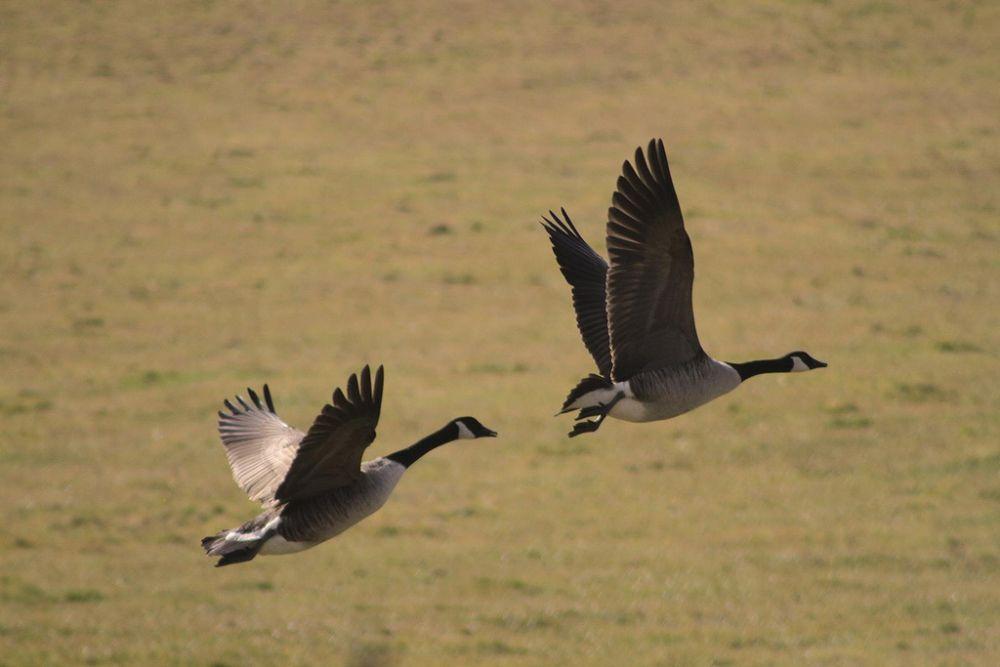- Tags:
- Wildlife,
- Something Wild

Canada Geese take flight. Photo Tiago Cabral via flickr Creative Commons
November's gray skies carry the last of the migrating Canada geese, graceful ribbons of true wild Canadians on a long-distance flight. These aren't the New England locals, flying low from golf course to cornfield.
The northerners are vocal in flight. Geese are highly social, vocal year-round as they maintain relationships both within the family grouping and the greater flock. Vocalizing by young begins within the egg before hatching, and helps build a strong family bond that lasts a full year.
The Vs of geese high and audible overhead are made up of adults and their young. Dominant males lead as the young learn landmarks along the way, stopover locations and final destination—both for the fall migration and the return trip in spring.
For most other birds, migration is innate not learned, and the young hatched this summer find their way south on their own, without adult supervision. Watch a flock of geese overhead and you'll see the formation shift from Vs to Ws and back again. You'll also see leaders taking turns at the more energy-demanding position at the head of a V.
As for how much energy is saved by flying in a V, it's all about wing tip spacing both to benefit from uplift off the wing action ahead and to reduce drag behind. Potential savings are high, but critical wing tip spacing is difficult to achieve and rarely maintained. Potential energy savings are about 50%, but actual achieved savings fall well below.
Regardless, there are energy gains to falling in line behind leaders that chart an efficient, direct course to a known destination; and by following a formation that keeps a flock securely—and noisily—in view.
